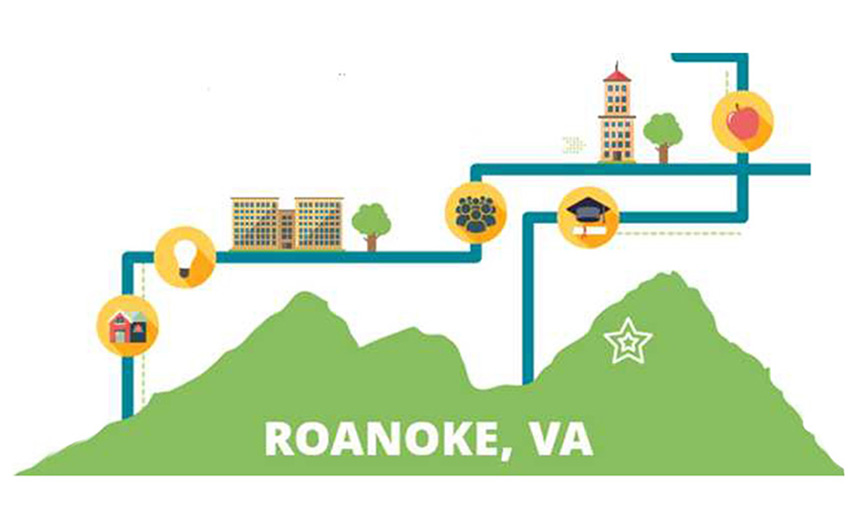Center for Community Health Innovation releases new report on children’s health
August 11, 2025
Category: Public Health

Roanoke City elementary school students are showing encouraging gains in their health and wellness, according to a new report from the Center for Community Health Innovation.
The Roanoke Valley Community Healthy Living Index is a triennial, citywide survey tracking key health indicators among students in grades K–5. Its latest findings show notable improvements on several fronts, including:
- Childhood obesity rates are dropping, returning to pre-pandemic levels (25% of elementary school students) after rising during the COVID-19 crisis.
- More students are walking or biking to school (21% of elementary students), a sign that healthy habits are being incorporated into daily routines.
- Families report stronger neighborhood support for healthy lifestyles, with 61% saying there is a culture of physical activity in their community and 59% saying neighbors took action in the past year to improve health or safety.
“On the whole, we’re seeing good progress,” said Liz Ackley, a health and exercise science professor and director of the Center for Community Health Innovation. “Nutrition behaviors are stable and generally good, and more residents report access to healthy food.”
“One notable trend that keeps showing up in the data is families are asking for more resources close to home,” she added. “That’s happening at the same time the city is doubling down on investing in vibrant neighborhood hubs, like Melrose Plaza. That kind of alignment between community voices and policymakers means we’re moving forward together in the right direction, which we love to see.”
The Center for Community Health Innovation is an initiative of Roanoke College. Since 2017, its community health index has offered a detailed picture of children’s health in Roanoke City, tracking changes in obesity rates, physical activity, nutrition habits, and neighborhood supports for healthy living.
The index was designed to share actionable data that can inform the work of local leaders, educators, and community groups focused on improving neighborhood health. Its insights contributed to the community-driven planning process for Melrose Plaza, a new neighborhood center that includes a grocery store, wellness clinic, learning center, and other vital resources.
RELATED: Community grocery store opens in project championed by professor, center
“Our center’s mission is really about being a partner that can help harness data and other resources to support change that is rooted in the needs and priorities of a community,” Ackley said. “By reaching out to neighborhoods and building partnerships, we’ve seen that it’s possible to develop ideas that lead to healthier, more connected communities.”
The work also offers invaluable, real-world learning experience for students at Roanoke College, who get to see firsthand what it means to drive community change. Four student researchers worked with Ackley on this year’s survey, helping analyze responses, interpret qualitative data, and compile the final report.
Next, they’ll have opportunities to use the findings to develop new research and projects aimed at addressing neighborhood health challenges. Past students contributed to the Melrose Plaza project, public sidewalk upgrades and other initiatives that led to tangible, on-the-ground change.
That training gives students an up-close look at how change happens and how a neighborhood’s environment affects its health, Ackley said. “It helps them understand public policy and health in a whole new way, connecting the dots between ideas and impact,” she said.
This year’s survey was also supported by Dr. Ian Michalski and the modern languages program, enabling the survey to be offered in Spanish, a campus collaboration that will be ongoing.
Data for the new report was collected between September 2024 and March 2025 from household surveys and FitnessGram assessments conducted in physical education classes. In survey responses, families asked for more parks, sidewalks and recreation facilities. Easier access to food that is both healthy and affordable was another common request.
This input will help shape the center’s work for the next three years, Ackley said. The full report can be viewed here: 2024 Community Healthy Living Index